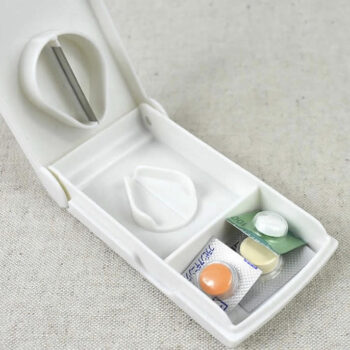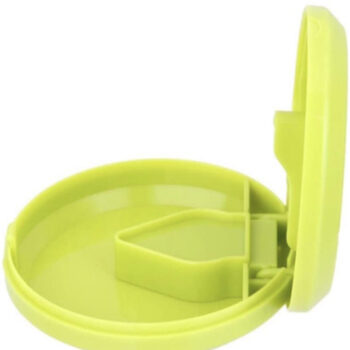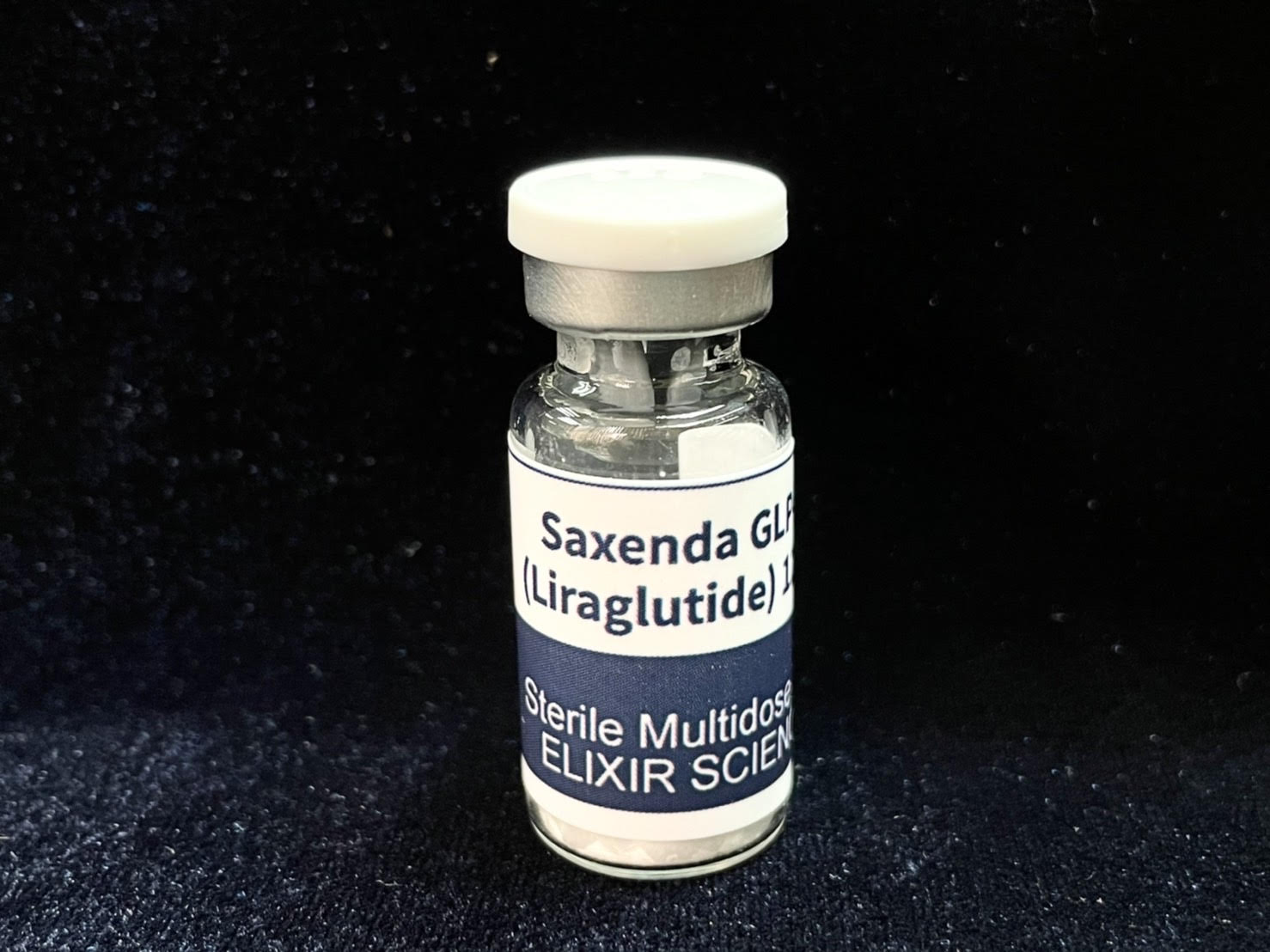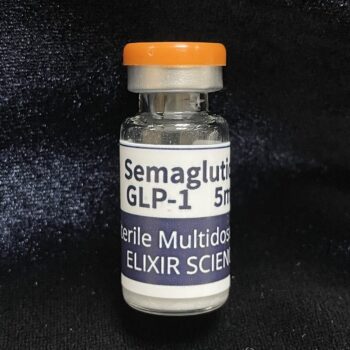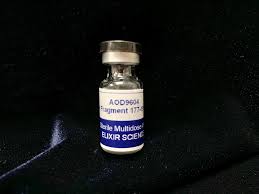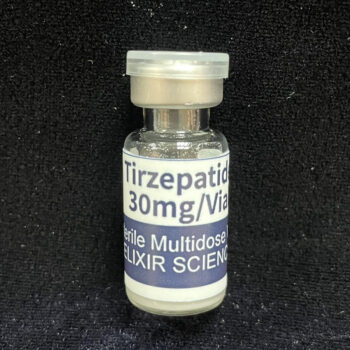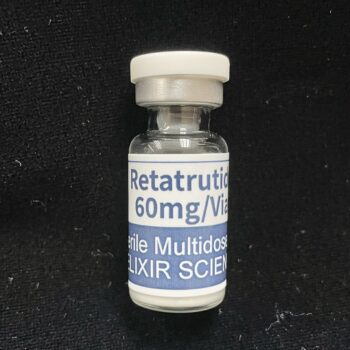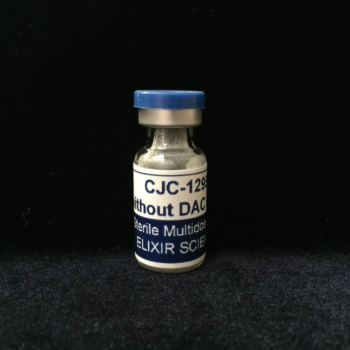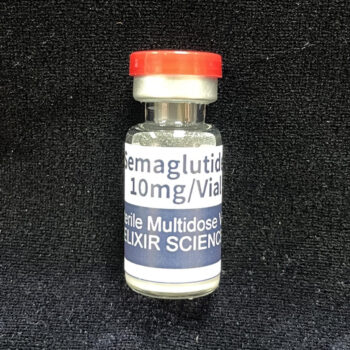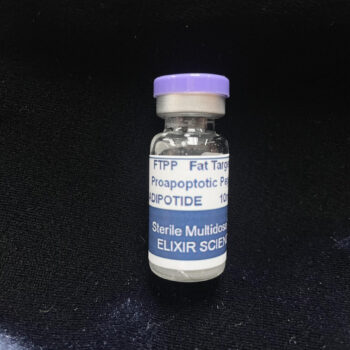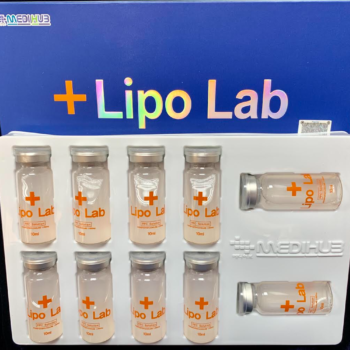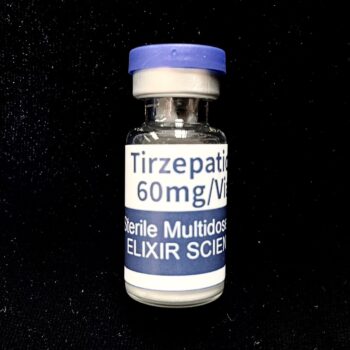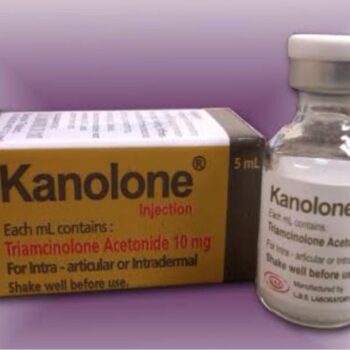** Customers to Japan **
If the shipment is found at customs as an injection, you will be required to show proof of drug supervision from 2020.
If you cannot prepare the proof of drug supervision, please follow the procedure to return it to the sender.
We will notify you when the item arrives at our company, so we will re-ship it after paying the shipping fee again.
GLP-1 (Liraglutide) 12mg/Vial+Injection water ample(ELIXIR SCIENCE)
Saxenda
Generic name: liraglutide
Brand name: Saxenda,
What is Saxenda?
Saxenda (liraglutide) is similar to a hormone that occurs naturally in the body and helps control blood sugar, insulin levels, and digestion.
Saxenda is an injectable prescription medicine that may help some obese adults or overweight adults who also have weight-related medical problems, and children aged 12 to 17 years with a body weight above 132 pounds (60 kg) and obesity, to lose weight and keep the weight off. It is used together with diet and exercise.
Saxenda is not for treating type 1 or type 2 diabetes. Saxenda is not a weight-loss medicine or appetite suppressant.
Warnings
The Victoza brand of liraglutide is used together with diet and exercise to treat type 2 diabetes. Do not use Saxenda and Victoza together
You should not use Saxenda if you have multiple endocrine neoplasia type 2 (tumors in your glands), a personal or family history of medullary thyroid cancer, insulin-dependent diabetes, diabetic ketoacidosis, or are pregnant.
In animal studies, liraglutide caused thyroid tumors or thyroid cancer. It is not known whether these effects would occur in people using regular doses.
Call your doctor at once if you have signs of a thyroid tumor, such as swelling or a lump in your neck, trouble swallowing, a hoarse voice, or shortness of breath.
Before using Saxenda
You should not use Saxenda if you are allergic to liraglutide, or if you have:
- multiple endocrine neoplasia type 2 (tumors in your glands);
- a personal or family history of medullary thyroid carcinoma (a type of thyroid cancer); or
- diabetic ketoacidosis (call your doctor for treatment).
You should not use Saxenda if you also use insulin or other medicines like liraglutide (albiglutide, dulaglutide, exenatide, Byetta, Bydureon, Tanzeum, Trulicity).
To make sure Saxenda is safe for you, tell your doctor if you have:
- stomach problems causing slow digestion;
- kidney or liver disease;
- high triglycerides (a type of fat in the blood);
- heart problems;
- a history of problems with your pancreas or gallbladder; or
- a history of depression or suicidal thoughts
In animal studies, liraglutide caused thyroid tumors or thyroid cancer. It is not known whether these effects would occur in people using regular doses. Ask your doctor about your risk.
It is not known whether Saxenda will harm an unborn baby. Tell your doctor if you are pregnant or plan to become pregnant.
It is not known whether liraglutide passes into breast milk or if it could affect the nursing baby. Tell your doctor if you are breast-feeding.
Saxenda is not FDA-approved for use by anyone younger than 18 years old.
How should I use Saxenda?
Saxenda is usually given once per day. Follow all directions on your prescription label. Your doctor may occasionally change your dose. Do not use this medicine in larger or smaller amounts or for longer than recommended.
Do not use Saxenda and Victoza together. These two brands contain the same active ingredient but they should not be used together.
Read all patient information, medication guides, and instruction sheets provided to you. Ask your doctor or pharmacist if you have any questions.
Saxenda is injected under the skin at any time of the day, with or without a meal. You will be shown how to use injections at home. Do not self-inject this medicine if you do not understand how to give the injection and properly dispose of used needles and syringes.
Saxenda comes in a prefilled injection pen. Ask your pharmacist which type of needles are best to use with your pen.
Your care provider will show you the best places on your body to inject Saxenda. Use a different place each time you give an injection. Do not inject into the same place two times in a row.
Do not use Saxenda if it has changed colors or if it has particles in it. Call your pharmacist for new medicine.
Also watch for signs of high blood sugar (hyperglycemia) such as increased thirst or urination, blurred vision, headache, and tiredness.
Blood sugar levels can be affected by stress, illness, surgery, exercise, alcohol use, or skipping meals. Ask your doctor before changing your dose or medication schedule.
Use a disposable needle only once. Follow any state or local laws about throwing away used needles and syringes. Use a puncture-proof “sharps” disposal container (ask your pharmacist where to get one and how to throw it away). Keep this container out of the reach of children and pets.
Saxenda is only part of a complete treatment program that may also include diet, exercise, weight control, regular blood sugar testing, and special medical care. Follow your doctor’s instructions very closely.
Storing unopened injection pens: Store in the refrigerator. Do not freeze Saxenda, and throw away the medication if it has become frozen. Do not use an unopened injection pen if the expiration date on the label has passed.
Storing after your first use: You may keep “in-use” injection pens in the refrigerator or at room temperature. Protect the pens from moisture, heat, and sunlight. Use within 30 days. Remove the needle before storing an injection pen, and keep the cap on the pen when not in use.
Dosing information
Usual Adult Dose of Saxenda for Weight Loss:
Dose escalation should be followed to reduce the likelihood of gastrointestinal symptoms; dose escalation may be delayed by 1 additional week if necessary:
Week 1: Inject 0.6 mg subcutaneously once a day
Week 2: Inject 1.2 mg subcutaneously once a day
Week 3: Inject 1.8 mg subcutaneously once a day
Week 4: Inject 2.4 mg subcutaneously once a day
Week 5: Inject 3 mg subcutaneously once a day
Maintenance dose: 3 mg subcutaneously once a day
Comments:
-Consider dose reduction of the insulin secretagogue to reduce the risk of hypoglycemia; conversely when discontinuing use in a patient with type 2 diabetes, monitor for an increase in blood glucose.
-If a dose of 3 mg once daily is not tolerated, discontinuation is recommended; efficacy for chronic weight management has not been established at lower doses.
-Evaluate weight loss at 16 weeks; if at least 4% of body weight has not been lost, it is unlikely the patient will achieve and sustain clinically meaningful weight loss with continued treatment.
Use: In adult patients with an initial BMI of 30 kg/m2 or greater (obese) or an initial BMI of 27 kg/m2 (overweight) or greater in the presence of at least 1 weight-related comorbid condition (e.g., hypertension, type 2 diabetes mellitus, or dyslipidemia), this drug is indicated as an adjunct to a reduced-calorie diet and increased physical activity for chronic weight management.
BMI=Body Mass Index is calculated by dividing weight in kilograms by height in meters squared. Charts are available for determining BMI based on height and weight, including a chart in Saxenda product labeling.
What happens if I miss a dose?
If you miss your daily dose of Saxenda, use the dose as soon as you remember. Then take your next daily dose as usual on the following day. Do not take an extra dose of Saxenda or increase your dose on the following day to make up for your missed dose.
If you miss your dose of Saxenda for 3 days or more, call your healthcare provider to talk about how to restart your treatment.
What happens if I overdose?
Seek emergency medical attention or call the Poison Help line at 1-800-222-1222.
What should I avoid while using Saxenda?
Never share an injection pen, cartridge, or syringe with another person, even if the needle has been changed. Sharing these devices can allow infections or disease to pass from one person to another.
Do not use Saxenda together with other weight loss products, diet pills, or appetite suppressants.
Saxenda side effects
Get emergency medical help if you have signs of an allergic reaction to Saxenda: hives; fast heartbeats; dizziness; trouble breathing or swallowing; swelling of your face, lips, tongue, or throat.
Call your doctor at once if you have:
- racing or pounding heartbeats;
- sudden changes in mood or behavior, suicidal thoughts;
- severe ongoing nausea, vomiting, or diarrhea;
- signs of a thyroid tumor – swelling or a lump in your neck, trouble swallowing, a hoarse voice, feeling short of breath;
- gallbladder problems – fever, upper stomach pain, clay-colored stools, jaundice (yellowing of your skin or eyes);
- symptoms of pancreatitis – severe pain in your upper stomach spreading to your back, nausea with or without vomiting, fast heart rate;
- severely low blood sugar – extreme weakness, confusion, tremors, sweating, fast heart rate, trouble speaking, nausea, vomiting, rapid breathing, fainting, and seizure (convulsions); or
- kidney problems – little or no urination; painful or difficult urination; swelling in your feet or ankles; feeling tired or short of breath.
Common Saxenda side effects may include:
- nausea (especially when you start using Saxenda), vomiting, stomach pain;
- increased heart rate;
- diarrhea, constipation;
- headache, dizziness; or
- feeling tired.
What other drugs will affect Saxenda?
Saxenda can slow your digestion, and it may take longer for your body to absorb any medicines you take by mouth.
Tell your doctor about all your current medicines and any you start or stop using, especially:
- insulin; or
- oral diabetes medicine – Glucotrol, Metaglip, Amaryl, Avandaryl, Duetact, DiaBeta, Micronase, Glucovance, and others.
GLP-1 (Liraglutide) 12mg/Vial+Injection water ample(ELIXIR SCIENCE)

